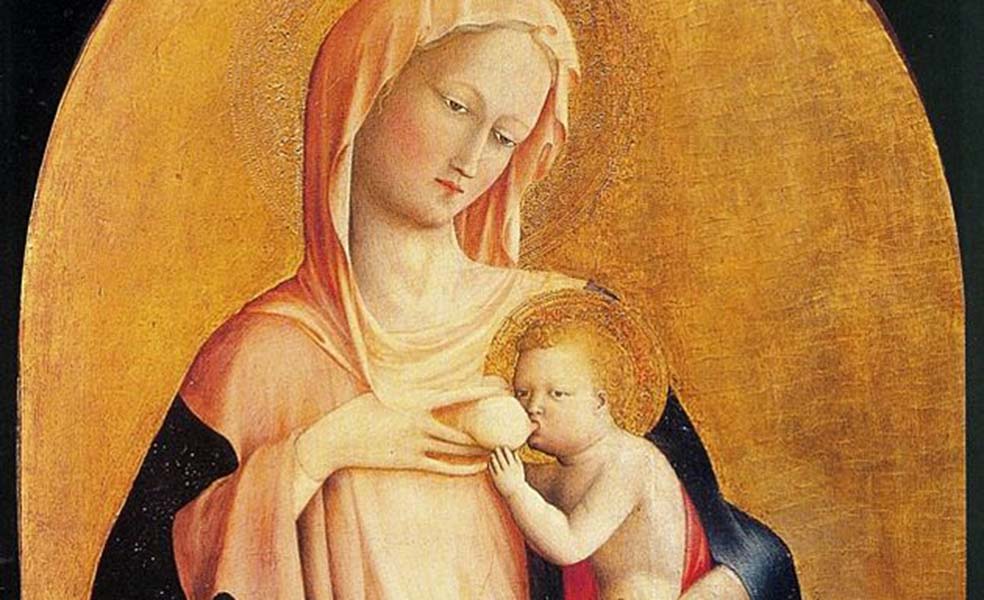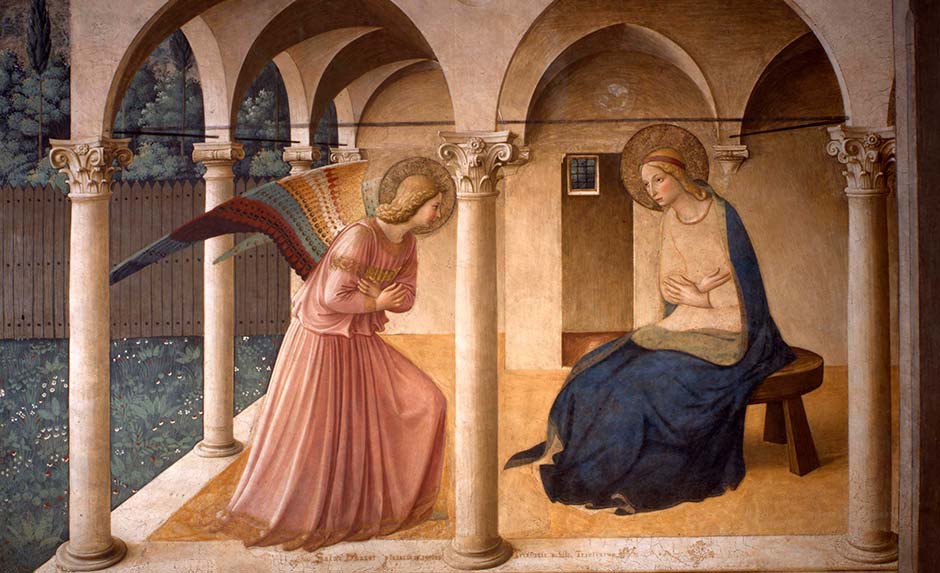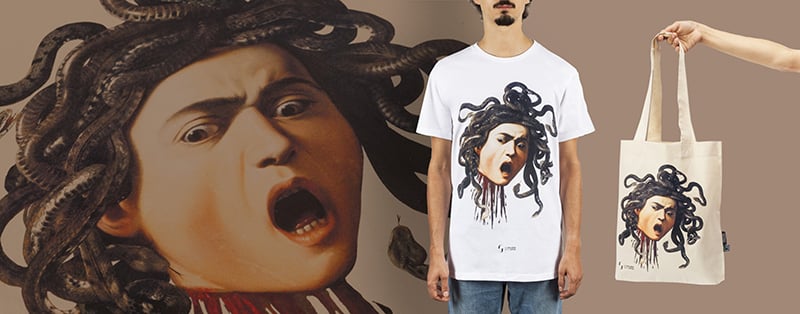Home / Experience / Masolino da Panicale
Masolino da Panicale

“For years erroneously forgotten by critics in their efforts ‘to achieve perfection’.” (G. Vasari)
Masolino da Panicale was a talented artist, known for the elegance of his forms, the subtle modelling of his bodies and the refined chromatism his style, thus placing him in the school of the Late International Gothic.
Uncertain origins and his early career
Scholars are uncertain about the origins of Tommaso – hence Maso – di Cristoforo Fini, alias Masolino. He is assumed to have been born around 1383, but the exact location is uncertain. He was nicknamed Masolino da Panicale because early scholars, including Giorgio Vasari, identified his birthplace with Panicale in Valdelsa, a town that does not exist. Others, however, claim he was born in Panicale, a small village in Umbria near the Tuscan border.
Recent studies identify his father as having been an official and ‘painter’ of the prestigious Lombard Visconti family – who ruled much of the peninsula, including the Tuscan and Umbrian hinterland, throughout the late-fourteenth century. This closeness to Lombard culture is likely to have been the reason for the affinities of Masolino’s style with that of northern Italy.
As with other artists, his father’s profession was decisive in Masolino’s choice to become a painter. He is thought to have begun work as a pupil of Lorenzo Ghiberti (1378–1455) while the latter was working on the majestic first door of the Baptistery of Florence in the early-fifteenth century. It is natural to think that this experience was fundamental to his training, witnessing Ghiberti’s technique, principles and not least the beauty of his forms first hand; all this at the dawn of the imminent Florentine Renaissance.
Among Masolino’s earliest documented works, the Uffizi Gallery now houses the Madonna of Humility (c. 1423): an emblematic work of the Florentine International Gothic. Enchanting and elegant, the Virgin is seated on the ground while serenely breastfeeding the Child. The ethereal, tapered bodies seem to want to occupy the entire space of the table; great harmony and elegance is also to be found in the delicate choice of colours.
Madonna of Humility, 1423 c.
His activity in Florence and collaboration with Masaccio
For years, critics considered Masolino to have been Masaccio’s master, perhaps due to the distance in age between them – Masolino in fact being a generation older – and the difference in style. More recent studies instead hypothesise a more equal-footed, fertile and intense collaboration between the two, from which Masolino himself benefitted.
Among the works arising from this artistic association are the Colonna Altarpiece (National Museum of Capodimonte, Naples, 1423–24), the Brancacci Chapel (1424–28) in the Church of the Carmine in Florence and the Saint Anne Metterza (Uffizi Gallery, 1424–25). The latter panel, painted for the church of St Ambrose, is a symbol of the city’s devotion to the saint; in fact, on his feast day in 1343, the Florentines had driven out the tyrant Duke of Athens and regained their freedom.
Sant’Anna Metterza, 1424 1425The term Metterza is a thirteenth-century dialect term for ‘third me’: suggesting a direct link with the iconography of the altarpiece that sees the figure of Anne – mother of the Virgin and progenitor of Christ – in a dominant position, with her hand open in a gesture of protection, emphasising the generational sequence between the figures. Through their gestures and the position of their hands, the characters guide each other through an atmosphere of tender affection.
Vasari attributed the work entirely to Masaccio but, during the twentieth century, the great historian Roberto Longhi traced the figure of St Anne and the holding angels, except for the one at the top right, back to Masolino.
His Final Years
Although unfortunately no works have survived to the present day, we know Masolino worked in Hungary from September 1425 to 1427. It was the military leader Pippo Spano (1369-1426) who called him and other Florentine artists to work at the court of King Sigismund of Luxembourg (1368–1437).
His death, like his birth, of uncertain date probably took place between 1440 and 1447 in Florence. Unlike Masaccio, who died prematurely, Masolino had time and the opportunity to promote his own interpretation of Florentine thought and style: he painted frescoes in Rome and Castiglione Olona (near Varese) that testify to his firm construction of space, the concreteness of bodies skilfully constructed through the use of light, and the softness of his figures and colours.
For years, the critical fortune of this artist was overshadowed by the greatness of his young collaborator, and only in the twentieth century was his importance finally acknowledged.
Cover photo: Madonna of Humility, circa 1523, Masolino da Panicale, Uffizi Gallery, Florence
Related products
No products were found matching your selection.
Related museums
From €8,00
The Museo di San Marco began as a monastery of the Dominican friars around 1437 when Cosimo de’ Medici commissioned the architect Michelozzo to renovate the old complex building. The present building is a masterpiece of Renaissance art and houses a rich collection of works, in particular by Beato Angelico, who lived and worked here for most of his life.
Average visit time:
1 hour





